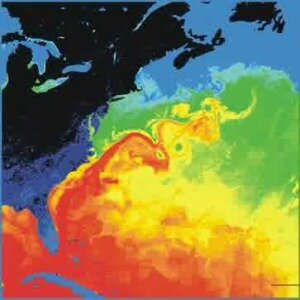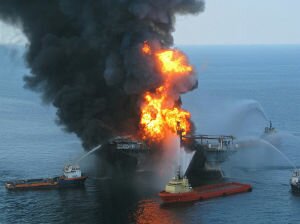Theseare following interesting facts about the Gulf of Mexico. The Gulf of Mexico is an ocean basin largely surrounded by the North American continent. It is bounded on the northeast, north, and northwest by the Gulf Coast of the United States, on the southwest and south by Mexico, and on the southeast by Cuba. Let’s check the list below to know more facts about it.
Facts about the Gulf of Mexico 1: The Late Triassic
Before the Late Triassic, the area now occupied by the Gulf of Mexico consisted of dry land, which included continental crust that now underlies Yucatan, within the middle of the large supercontinent of Pangea. Geologists and other Earth scientists agree in general that the present Gulf of Mexico basin originated in Late Triassic time as the result of rifting within Pangea.
Facts about the Gulf of Mexico 2: Seven Main Areas
At this time, the Gulf of Mexico has the 7 main areas named Gulf of Mexico Basin, Northeast Gulf of Mexico, South Florida Continental Shelf and Slope, Campeche Bank, Bay of Campeche, Western Gulf of Mexico and Northwest Gulf of Mexico. Find more facts about the Great Gatsby here
Facts about the Gulf of Mexico 3: Amerigo Vespuci
In 1497, Amerigo Vespuci became the first European who explored the Gulf Mexico. In his letters, Vespucci described this trip, and once Juan de la Cosa returned to Spain, a famous world map, depicting Cuba as an island, was produced.
Facts about the Gulf of Mexico 4: Location
The Gulf’s southwestern and southern shores lie along the Mexican states of Tamaulipas, Veracruz, Tabasco, Campeche, Yucatán, and the northernmost tip of Quintana Roo. While the Gulf of Mexico’s eastern, northern, and northwestern shores lie along the US states of Florida, Alabama, Mississippi, Louisiana, and Texas.
Facts about the Gulf of Mexico 5: Biota
There are various biota live in the Gulf of Mexico such as cbacteria, microbenthos, rabs, sea pens, crinoids, and demersal fish, cetaceans, finfish, shrimp, shellfish and so forth.
Facts about the Gulf of Mexico 6: The Gulf Stream
It is a powerful, warm, and swift Atlantic Ocean current that originates at the tip of Florida, and follows the eastern coastlines of the United States and Newfoundland before crossing the Atlantic Ocean. Its presence has led to the development of strong cyclones of all types, both within the atmosphere and within the ocean. Find more facts about the Gold Rush here
Facts about the Gulf of Mexico 7: Aseismic
The Gulf of Mexico is considered aseismic; however, mild tremors have been recorded throughout history (usually 5.0 or less on the Richter scale). Earthquakes may be caused by interactions between sediment loading on the sea floor and adjustment by the crust.
Facts about the Gulf of Mexico 8: Fishing Industries
The Gulf of Mexico supports major American, Mexican and Cuban fishing industries. Its euphotic zone contains plankton which attracts fish, shrimp and squid.
Facts about the Gulf of Mexico 9: Explosion and Oil Spill
The second largest oil spill in the Gulf of Mexico happened in June 1979. The Ixtoc I oil platform in the Bay of Campeche suffered a blowout leading to a catastrophic explosion, which resulted in a massive oil spill that continued for nine months before the well was finally capped.
Facts about the Gulf of Mexico 10: Deepwater Horizon Explosion and Oil Spill
On April 20, 2010, the Deepwater Horizon oil platform suffered a catastrophic explosion; it sank a day-and-a-half later. On April 29, the U.S. government revealed that approximately 5,000 barrels (790 m3) per day, five times the original estimate, were pouring into the Gulf from the wellhead. On July 15, 2010, BP announced that the leak stopped for the first time in 88 days.
Perhaps, those interesting facts about the Gulf of Mexico can give you additional information.










 www.PortlandPayday.Loans
www.PortlandPayday.Loans